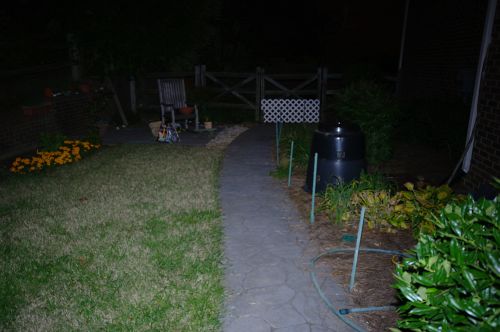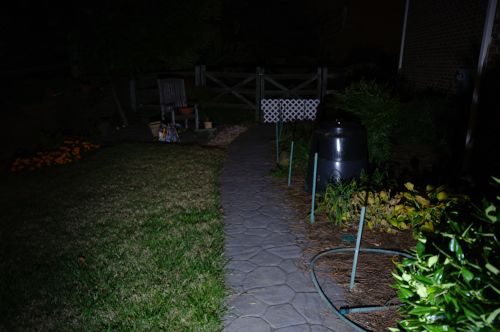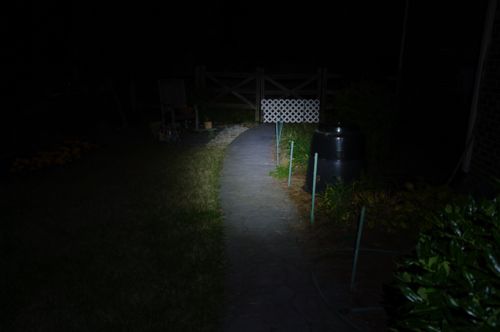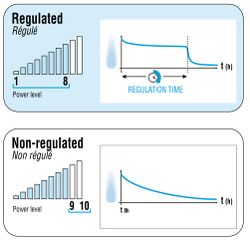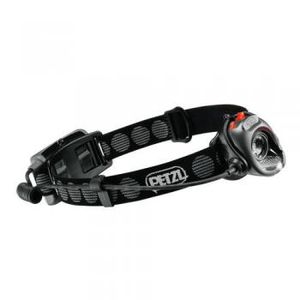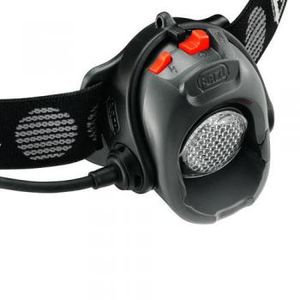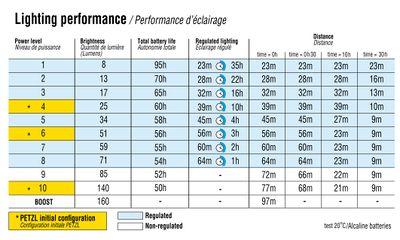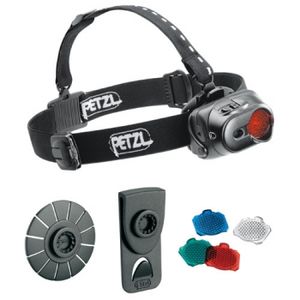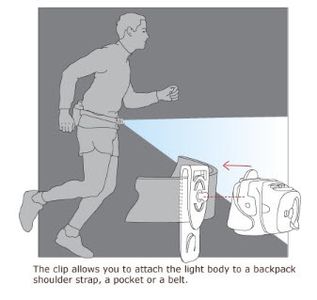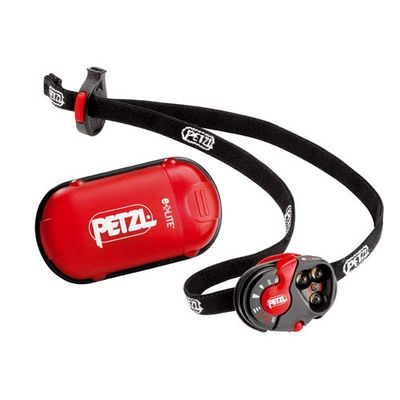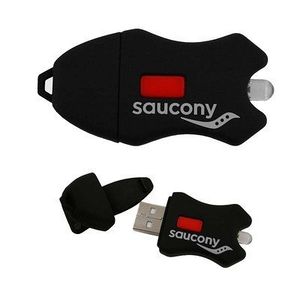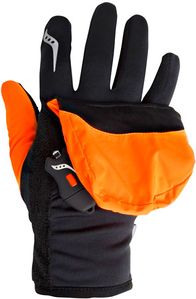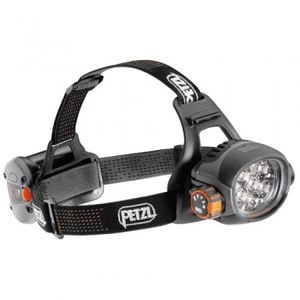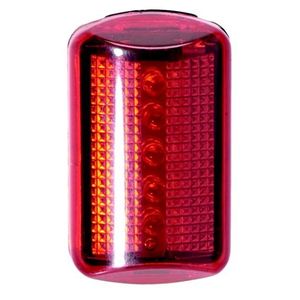Best Running Lights

| Light | Why it's recommended | Cost |
|---|---|---|
| Petzl MYO RXP | The best head light available for a reasonable cost | $90 |
| Petzl Tactikka XP Adapt | The best head light that can be waist mounted (great for dark trails) | $70 |
| Petzl Tactikka XP | This is the same as the Petzl Tactikka XP Adapt, but without the option for waist mounting. | $60 |
| Petzl e+Lite | This is a great backup/emergency light | $30 |
| Saucony USB Clip Light or Saucony Ulti-Mitt with Light | Useful as a cheap emergency light. | $10 or $45 with the Ulti-Mitt gloves |
| Petzl Ultra | Great light, but ultra expensive! | $350 |
| Petzl Ultra Belt | The Petzl Ultra with the battery mounted on your waist. Useful for extreme cold. | $500 |
There are many other LED head lights available, and most of them do a reasonable job. However, I would not use one of these cheaper lights having used the Petzl MYO RXP and Petzl Tactikka XP Adapt.
Contents
[hide]1 Types of light
There are four factors to consider with a running light; location, the beam pattern, regulation and brightness.
1.1 Location
The three locations for a light while running are handheld, waist mounted and head mounted. I do not recommend handheld lights at all. The biggest problem is that they mess up your running form, but they occupy one of your hands making it tricky to do anything in the dark. There are advantages and disadvantages to waist mounted and head mounted. Because a head mounted light is aligned with your eyes, it's hard to see the shape of the ground. This is best seen in the images below.
Other considerations:
- Head mounted directs the light where you point your head, making it easier to see where you're going. Head mounted also works better for directing the light to things in your hands, like putting on gloves or looking at your Watch.
- Waist mounted lights are much better in the rain or dusty conditions. With a head mounted light, the beam picks up the rain or dust in front of your face, making it hard to see.
- Head mounted lights are better at showing up branches or spider webs that are about to hit your face.
1.2 Beam Pattern
Most lights project a narrow spot beam, which illuminates a longer distance. Many of the Petzl lights have a diffuser than can be moved in front of the light to provide an even illumination, though it does not reach so far.
- Head or waist mounted lights
1.3 Regulation
With a regulated light the light intensity will stay constant over most of the life of the battery, and it will then grow rapidly dim. This can be seen graphically below. The regulation is nice, but when the end of the regulation period is reached, the light intensity can drop very quickly, so you need to have spare batteries with you if you expect to run out of power.
1.4 Brightness
The brightness you need depends on your situation. In many cases you just need to see what's immediately ahead of you, so brightness is not critical. If you're on trails, then a really bright light can help see what direction a trail is taking, or help with navigation. Many times I've found that having a dim light can work best, as it helps me see what's ahead without compromising my night vision, allowing me overall better visibility. A very bright light will create a pool of light that can become mentally confining and isolating. Having a light that will go both very bright and very dim is ideal, and the Petzl MYO RXP stands out for this.
2 Recommended Lights
I have tried over a dozen different lights, from the bad old days of incandescent lights that give a patchy yellow glow to new regulated LED lights. My two favorite lights are both Petzl as they have an effective diffuser. I've also tried lights from other manufacturers, but I've consistently found Petzl lights to be better.
2.1 Highly Recommended - Petzl MYO RXP
The Petzl MYO RXP is a regulated light, as described above. The light will flash a few times when the battery drops too low, which gives you some warning before it runs out of power. The RXP also support brighter output that is unregulated, which is useful when you need a lot of light for a short period of time. The regulated output can be used so that you will have power for an overnight run, and on its lowest power setting it will run for 96 hours. The RXP is also nice because it can output a very dim light. I've found this works well near dawn, where the light from the RXP on its lowest output and with the diffuser is enough to see by, but allows my eyes to adjust so that I can see a little further using the available light. I've found the RXP works well in heavy rain as long as it is in the normal position. If you run with it wrapped around your hand, the rain can get in the underside and cause problems until it dries out. The RXP uses AA batteries, so it is a little heavy, but having the batteries on the back balances things quite well. It also allows the batteries to stay warmer in cold conditions if you wear it with the back under a hat; you'll probably need two hats to make that work.
- Petzl MYO RXP
2.2 Highly Recommended - Petzl Tactikka XP Adapt
The Petzl Tactikka XP Adapt is not as bright as the Petzl MYO RXP, but it can be waist mounted. This works best with compression shorts/tights to prevent the light wobbling around. I've found this works far better on trails than a head mounted light. The XP Adapt uses AAA batteries, so it's lighter than the Petzl MYO RXP. If you don't need the waist mounting, then the Petzl Tactikka XP is the same light without the adapter kit, and it's quite a bit cheaper than the MYO RXP.
- Petzl MYO RXP
2.3 Petzl e+Lite
The Petzl e+Lite worth considering as a backup light, but don't use this as your primary light unless weight is of paramount importance. It's not bright enough and the lithium batteries are pricy. However, it will fit in the pocket of my shorts, so it makes a great 'oops' light.
2.4 Saucony USB Clip Light
This light is tiny, but will provide enough light in an emergency. It's so small it's easy to clip to clothing, and you can get the light included with other Saucony gear. I have the Saucony Ulti-Mitt which comes with the light and has a place for it to clip on that works well. (These are one of my favorite gloves, with the convertible cover to turn them into mittens.) One caveat is that the light does not hold its charge well, so leave it plugged in.
- Saucony USB Clip Light
2.5 Petzl Ultra
I don't believe the Petzl Ultra offers good value for money, but it may be worth considering if you need the very best in head lighting. This light is also available as the Petzl Ultra Belt with the battery on a long cord so it can be waist mounted. This is a good idea if you need a light for use in extreme cold, as low temperatures sap the battery power. (Petzl used to make the MYO XP Belt, but it's been discontinued.)
- Petzl Ultra
3 Safety Light
A flashing red light clipped to the back of your waist band is a worthwhile addition for running in urban situations. The Nathan Clip-On Safety Strobe is less than $10.
